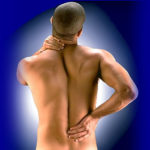Chief Medical Director, Obafemi Awolowo University Teaching Hospital Complex (OAUTHC), Ile-Ife, Osun State, Professor Victor Adetiloye has said that every pregnancy carries its risks, but good antenatal care and support given through imaging can help to minimise those risks.
Professor Adetiloye said this in his inaugural lecture series of the Obafemi Awolowo University entitled “Realities in Shadows and Images—Seeing is Believing and More Reliable than Feelings”.
The don stated that the effectiveness of such antenatal support can improve pregnancy outcomes and enhance the healthy development of the baby in the womb through screening of its development and early detection of any co-existing condition.
Professor Adetiloye declared that many coexisting conditions such as hydatidiform mole and inadequate birth canal can be diagnosed with ultrasound imaging to ensure appropriate treatment modality is put in place to improve pregnancy outcome.
Report on late Taraba Gov’s plane crash: Expert describes action criminal
The expert stated that all pregnancies need a detailed ultrasound evaluation, unlike the current practice where antenatal ultrasound is limited to the baby inside the womb and other organs in the woman is not checked to pick early any co-existing disease.
Professor Adetiloye said that medical imaging technology is important in evaluating the growth of the baby inside the womb, in detecting unborn babies with an anomaly, in determining if the birth canal is adequate in a woman as well as the weight of the unborn baby.
He declared that many birth defects occur in the first three months of pregnancy and are best prevented by quality preconception and early prenatal care.
According to him, “accurate estimation of fetal weight is of paramount importance in the management of labour and delivery to optimise safe motherhood.”
Professor Adetiloye described medical imaging as one of the success stories of 21st century medicine that aids in disease prevention, early detection, diagnosis and treatment.
For Nigeria to advance the speciality of radiology, he suggested the acquisition of appropriate imaging equipment and funding of residency training in sub-specialisation in radiology.
Professor Adetiloye declared, “if the geo-economic barriers are not bridged, the modern imaging facilities currently available in the developed countries may turn out to be what we may be celebrating in the future in the third world countries by the time such equipment might have become obsolete in the developed world.”
He reiterated OAUTHC’s achievements under his watch to include 70 open heart surgeries in two years; over 600 pin-hole surgeries and 100 total knees and hip replacement in the last four years.
Also there is the acquisition of new 16-slice CT scanner, as well as a modern and equipped medical ward and the obstetric fistula ward at Ilesa.






